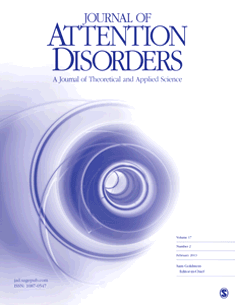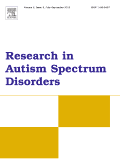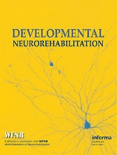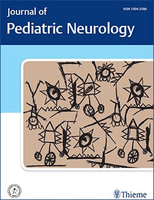
Analysis of Verbal Behavior
Scope & Guideline
Enhancing understanding of verbal interactions and their implications.
Introduction
Aims and Scopes
- Verbal Behavior Analysis in Clinical Populations:
The journal emphasizes research on verbal behavior analysis specifically targeting clinical populations, notably children with Autism Spectrum Disorder (ASD). This includes studies on interventions, assessments, and treatments designed to improve verbal communication skills. - Experimental and Applied Behavior Analysis:
It publishes both experimental and applied research that investigates the principles of behavior analysis in relation to verbal behavior. This dual focus allows for a comprehensive understanding of how verbal behavior can be modified and enhanced. - Innovative Teaching Strategies:
A core area of focus is the development and evaluation of innovative teaching methods for enhancing verbal behavior, such as multiple exemplar instruction, matrix training, and instructive feedback, particularly in children with learning disabilities. - Functional Analysis of Verbal Behavior:
The journal also explores the functional analysis of verbal behavior, examining the antecedents and consequences that influence verbal communication patterns in various populations, including those with atypical language development. - Interdisciplinary Approaches to Verbal Behavior:
Research that integrates insights from other fields, such as linguistics, psychology, and education, to enhance the understanding of verbal behavior and its implications for practice is also a significant focus.
Trending and Emerging
- Telehealth and Remote Instruction:
The rise of telehealth and remote instruction methods, particularly in the context of teaching verbal behavior, has become a prominent theme. This trend is particularly relevant in light of the recent global shifts towards online education and therapy. - Functional Analysis in Diverse Populations:
There is an increasing focus on functional analysis of verbal behavior in diverse populations, including linguistically diverse speakers and individuals with varying disabilities, which reflects a growing interest in inclusivity and the application of behavior analysis across different cultural contexts. - Emergent Learning and Instructional Strategies:
Research into emergent learning outcomes and novel instructional strategies, such as multiple exemplar training and matrix training, is on the rise. These studies aim to uncover new ways to facilitate learning and verbal behavior in children with ASD. - Integration of Technology in Verbal Behavior Interventions:
The incorporation of technology, such as apps and online platforms, into verbal behavior interventions is becoming increasingly popular. This trend signifies a move towards modernizing the approaches used in teaching and analyzing verbal behavior.
Declining or Waning
- General Language Development Studies:
Research focusing broadly on language development without specific ties to behavior analysis or interventions for individuals with disabilities appears to be declining. The journal seems to be moving towards more targeted studies that have direct implications for treatment and intervention. - Theoretical Expositions on Verbal Behavior:
There has been a noticeable decrease in purely theoretical discussions or expositions on verbal behavior principles, as the journal prioritizes empirical research that demonstrates practical applications and outcomes. - Traditional Methods of Verbal Behavior Training:
Traditional approaches to teaching verbal behavior that do not incorporate modern techniques, such as telehealth or technology-assisted methods, are less frequently represented in recent publications, indicating a shift towards more innovative and contemporary practices.
Similar Journals

Education and Training in Autism and Developmental Disabilities
Bridging Research and Practice for Exceptional LearnersEducation and Training in Autism and Developmental Disabilities is a prominent journal published by the Council for Exceptional Children, focusing on innovative research and insights in the field of autism and developmental disabilities education. With an evolving scope since its inception, the journal emphasizes the importance of evidence-based practices, pedagogical strategies, and interdisciplinary approaches to enhance educational outcomes for individuals with autism and related conditions. Although it currently holds a Q3 category in Developmental and Educational Psychology and is ranked in the Q2 category in Education, it continues to gain recognition with a respectable placement in Scopus rankings—indicating that it plays a crucial role in informing educational practices and policy decisions. Researchers and practitioners can access a wealth of information through its open access options, underscoring a commitment to disseminating knowledge widely. By bridging the gap between research and real-world application, this journal serves as an essential resource for education professionals seeking to advance their understanding and improve the quality of education for neurodiverse learners.

Clinical Psychology and Special Education
Transforming understanding in clinical psychology and special education.Clinical Psychology and Special Education is a distinguished open-access journal published by the Moscow State Psychological & Pedagogical University, focusing on the evolving fields of clinical psychology and special education. Since its inception in 2015, the journal has made substantial contributions to the understanding of psychological practices, interventions, and educational strategies pertinent to diverse populations. With a commitment to accessibility, it attracts a global readership, providing essential insights for researchers, practitioners, and students alike. The journal is indexed in Scopus and features prominent rankings in various psychology domains, reflecting its dedication to quality research and innovative methodologies. As we enter the converged years of 2023 to 2024, Clinical Psychology and Special Education continues to be a pivotal platform for advancing knowledge and fostering dialogue in contemporary psychological and educational practices.

Neuropsychiatric Disease and Treatment
Unlocking New Insights in Neuropsychiatric Disease ManagementNeuropsychiatric Disease and Treatment, published by DOVE MEDICAL PRESS LTD, is a prominent open access journal dedicated to advancing the field of neuropsychiatry. Since its inception in 2009, this journal has provided a platform for the dissemination of high-quality research on innovative therapies and treatments for neuropsychiatric disorders. With an impressive Q2 ranking in Psychiatry and Mental Health and a Q3 ranking in Biological Psychiatry as of 2023, it holds a reputable position within the scholarly community, reflecting its commitment to impactful research. The journal's open access model ensures widespread accessibility, fostering collaboration and dialogue among researchers, clinicians, and students worldwide. The journal accepts a variety of article types, including original research, reviews, and case studies, encompassing a range of topics from pathophysiology to therapeutic advancements. With its base in New Zealand and a Scopus rank placing it within the 69th percentile of Psychiatry and Mental Health, Neuropsychiatric Disease and Treatment is an essential resource for those dedicated to understanding and treating the complexities of neuropsychiatric conditions.

International Review of Pragmatics
Innovating Research in Linguistics and PsychologyInternational Review of Pragmatics is a leading scholarly journal published by BRILL, renowned for its contribution to the fields of Communication, Linguistics and Language, and Psychology. With an ISSN of 1877-3095 and an E-ISSN of 1877-3109, this journal offers a rigorous platform for high-quality research and theoretical contributions that explore the complexities of pragmatics across various domains. Situated in the Netherlands, the journal is currently ranked in the Q2 quartile for both Communication and Linguistics, reflecting its substantial influence and academic excellence. The Scopus rankings further emphasize its importance, with percentile rankings in the 55th to 78th range across several relevant categories. Since its inception in 2014, the journal has consistently pursued the objective of fostering interdisciplinary dialogue and advancing scholarly discourse in pragmatics. Although the journal does not currently offer open access options, it remains committed to accessibility in academia through various channels. Researchers, professionals, and students alike will find valuable insights and contemporary discussions that propel the field forward, making International Review of Pragmatics an essential resource for those dedicated to understanding the intricacies of human communication.

Molecular Autism
Fostering innovation in autism research and therapy.Molecular Autism, published by BMC in the United Kingdom, is a premier open-access journal dedicated to publishing high-quality research on the molecular and genetic factors contributing to autism spectrum disorders. Since its inception in 2010, the journal has established itself as a vital resource for researchers and clinicians, offering insights into the developmental biology, neuroscience, and psychiatric dimensions of autism. With an impressive impact factor and rankings placing it in the Q1 category across multiple relevant fields such as Developmental Biology, Developmental Neuroscience, Molecular Biology, and Psychiatry and Mental Health, it serves as a critical platform for the dissemination of innovative research and interdisciplinary collaboration. The journal encourages open dialogue through its commitment to making research freely accessible, thereby advancing knowledge and fostering advances in the understanding of autism. By bridging diverse disciplines and engaging with cutting-edge research, Molecular Autism aims to enhance our understanding of autism's complexities and inform future therapeutic approaches.

Journal of Attention Disorders
Pioneering insights into attention and its disorders.The Journal of Attention Disorders is a premier peer-reviewed publication dedicated to advancing the understanding and treatment of attention-related disorders. Published by SAGE Publications Inc, this esteemed journal has become a vital resource in the fields of Clinical Psychology and Developmental and Educational Psychology, consistently ranking in the Q1 quartile for both categories as of 2023. With a significant impact factor and a commendable Scopus rank—#37 in Developmental and Educational Psychology and #34 in Clinical Psychology—this journal fosters innovative research and evidence-based practices that contribute to the mental health field. Since its inception in 1996, the Journal of Attention Disorders has provided a platform for the latest findings and discussions, supporting researchers, practitioners, and students alike. While the journal remains non-open access, it ensures rigorous dissemination of crucial information, solidifying its importance in shaping future research and best practices concerning attention disorders.

Research in Autism Spectrum Disorders
Exploring the complexities of autism with scholarly rigor.Research in Autism Spectrum Disorders, an esteemed journal published by ELSEVIER SCI LTD, is dedicated to advancing the understanding of autism spectrum disorders through innovative research and scholarly articles. Since its inception in 2007, the journal has carved out a distinguished place in the field, reflected in its robust 2023 Impact Factor and Q2 ranking in key categories such as Clinical Psychology, Developmental and Educational Psychology, and Psychiatry and Mental Health. By bridging the gap between research and practice, this journal serves as a vital resource for researchers, professionals, and students alike, fostering collaboration and knowledge-sharing among those dedicated to improving outcomes for individuals with autism. Featuring a broad scope that encompasses various aspects of autism research, the journal remains committed to publishing high-quality studies that drive the conversation forward in this critical area of study. Access options for the journal's content are available under the Elsevier guidelines, ensuring that pivotal research reaches a wide audience.

Developmental Neurorehabilitation
Catalyzing breakthroughs in neurorehabilitation for children.Developmental Neurorehabilitation is an esteemed journal published by Taylor & Francis Inc, dedicated to advancing the field of developmental neuroscience and rehabilitation. With an ISSN of 1751-8423 and an E-ISSN of 1751-8431, this journal serves as a vital resource for researchers, clinicians, and students interested in innovative therapeutic approaches and rehabilitation techniques for children and adolescents. Since its inception in 1997, Developmental Neurorehabilitation has focused on disseminating high-quality research, contributing to a deeper understanding of recovery processes in developmental disorders, and facilitating interdisciplinary dialogue among professionals. With its recognition in Q2 and Q3 quartiles across prominent categories such as Pediatrics and Rehabilitation, it stands out as a pivotal publication in its field, boasting Scopus rankings that reflect its significant impact—ranked #53 in Rehabilitation and #139 in Pediatrics, among others. While maintaining a commitment to quality research, the journal does not currently offer open access but remains accessible through institutional subscriptions, further enriching the academic landscape with critical insights into rehabilitation methodologies for developmental challenges and promoting better clinical practices to improve patient outcomes.

Journal of Pediatric Neurology
Exploring innovative therapies for young minds.Journal of Pediatric Neurology, published by GEORG THIEME VERLAG KG, stands as a dedicated resource in the field of pediatric neurology, navigating the complex interplay of neurological and developmental disorders affecting children. With its ISSN 1304-2580 and E-ISSN 1875-9041, this journal has been a pivotal platform for advancing research since its inception in 2003, and continues to present critical findings and discussions up to 2024. Although currently categorized in the Q4 quartile for both Neurology (Clinical) and Pediatrics, Perinatology and Child Health within Scopus rankings, the journal's commitment to fostering scholarly dialogue is essential for researchers, clinicians, and students dealing with pediatric patients. Its structured coverage of various neurological disorders, treatment strategies, and innovative therapies contributes to the broader understanding of pediatric neurology, despite the challenges noted in its ranking percentile. By encouraging submissions from diverse disciplines, the journal aims to enhance clinical practice and bridge gaps in knowledge, ensuring a multidisciplinary approach to child health and development.

Behavior Analysis in Practice
Exploring Effective Strategies for Behavior Change.Behavior Analysis in Practice, published by Springer, is a premier peer-reviewed journal dedicated to the practical application of behavior analysis principles and techniques. With the ISSN 1998-1929 and E-ISSN 2196-8934, this journal serves as a vital resource for researchers, practitioners, and students interested in the implementation of behavior analytic strategies across various settings, including education, therapy, and organizational practices. Although it operates under a subscription model, the journal emphasizes high-quality, empirical research that aims to bridge the gap between theoretical frameworks and real-world applications, making it indispensable for professionals seeking innovative approaches to behavior management. Situated at One New York Plaza, Suite 4600, New York, NY 10004, United States, this journal not only contributes significantly to the field of behavior analysis but also encourages the dissemination of knowledge that enhances evidence-based practice globally.